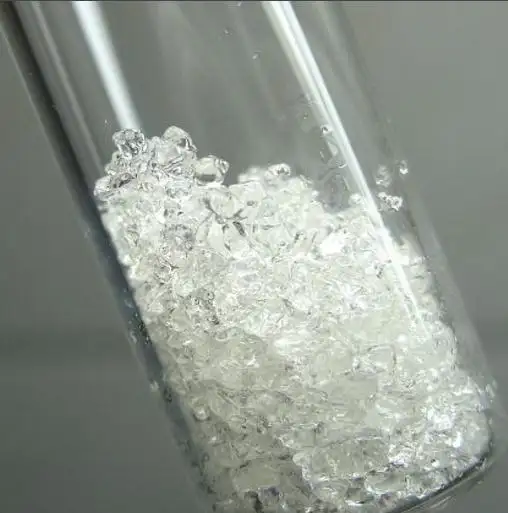Фенол абдан маанилүү органикалык химиялык чийки зат болуп саналат жана колдонуунун кеңири спектри. Анын коммерциялык өндүрүш ыкмалары изилдөөчүлөрдү жана өндүрүүчүлөрдү абдан кызыктырат. Фенолду коммерциялык өндүрүүнүн эки негизги ыкмасы бар, алар: кумен процесси жана крезол процесси.
Кумен процесси фенолду өндүрүүнүн эң кеңири колдонулган коммерциялык ыкмасы болуп саналат. Ал кумендин гидропероксидин алуу үчүн кислота катализаторунун катышуусунда кумен менен бензолдун реакциясын камтыйт. Гидропероксид андан кийин натрий гидроксиди сыяктуу күчтүү база менен реакцияга киретфенолжана ацетон. Бул процесстин негизги артыкчылыгы - бул салыштырмалуу арзан сырьену колдонот жана реакциянын шарттары салыштырмалуу жумшак болгондуктан, аны натыйжалуу жана башкаруу оңой. Ошондуктан кумен процесси фенолду өндүрүүдө кеңири колдонулат.
Крезол процесси фенол үчүн азыраак колдонулган коммерциялык өндүрүш ыкмасы. Крезолду алуу үчүн кислота катализаторунун катышуусунда толуолдун метанол менен реакциясын камтыйт. Андан кийин крезол фенолду өндүрүү үчүн платина же палладий сыяктуу катализатордун катышуусунда гидрогендентилет. Бул процесстин негизги артыкчылыгы - бул салыштырмалуу арзан чийки затты колдонот жана реакция шарттары салыштырмалуу жумшак, бирок процесс татаалыраак жана көбүрөөк жабдууларды жана кадамдарды талап кылат. Мындан тышкары, кресол процесси көп сандагы кошумча продуктуларды чыгарат, бул анын экономикалык натыйжалуулугун төмөндөтөт. Ошондуктан бул ыкма фенолду өндүрүүдө кеңири колдонулбайт.
Жыйынтыктап айтканда, фенолду коммерциялык өндүрүүнүн эки негизги ыкмасы бар: кумен процесси жана крезол процесси. Кумен процесси кеңири колдонулат, анткени ал арзан чийки затты колдонот, реакциянын шарттары жумшак жана башкаруу оңой. Крезол процесси азыраак колдонулат, анткени ал көбүрөөк жабдууларды жана кадамдарды талап кылат, татаал процесске ээ жана көп сандагы кошумча продуктуларды чыгарып, анын экономикалык натыйжалуулугун төмөндөтөт. Келечекте фенолду коммерциялык өндүрүү үчүн жаңы мүмкүнчүлүктөрдү ачып, эффективдүүлүктү жогорулатуу жана өндүрүштүн өздүк наркын төмөндөтүү үчүн жаңы технологиялар жана процесстер иштелип чыгышы мүмкүн.
Посттун убактысы: 2023-жылдын 11-декабрына чейин





